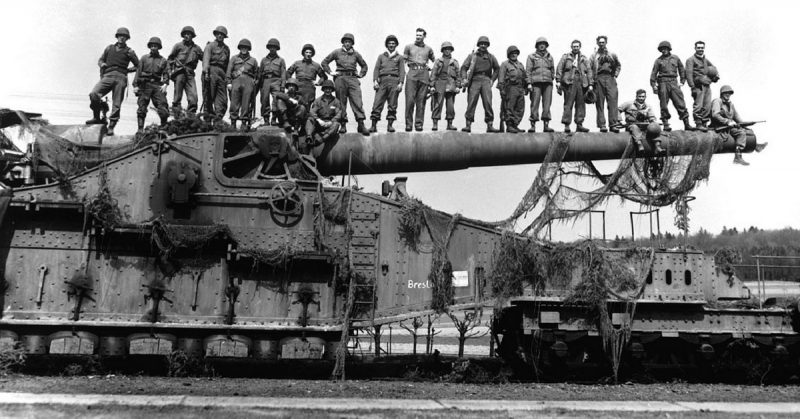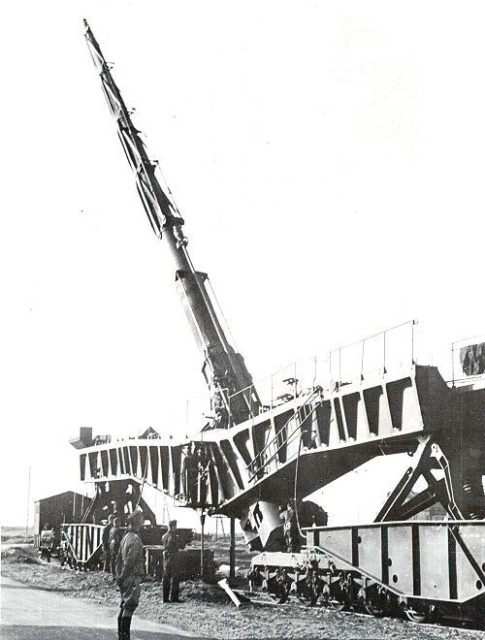In the 19th century, transport limitations restricted the size of artillery. If a piece of equipment could not be pulled by horses, then it could not be brought to where it was needed. This set an upper limit of 210 mm guns. The Belgians completed a network of forts to defend their cities in 1892, and the fortifications could withstand such firepower, making them effectively invulnerable to artillery.
With the development of the internal combustion engine, that was about to change.
The Skoda Howitzers
One of the first guns larger than 210 mm was produced by the Austro-Hungarian Skoda company. This 305 mm howitzer could be dismantled and transported as three separate pieces; each part towed by a tractor. It took 40 minutes to reassemble, after which it was ready to fire.
These howitzers proved a huge success on the Eastern Front of World War One, where the Austrians used them to flatten Russian fortifications. They were first used, however, on the Western Front.
When Germany invaded Belgium in 1914, their initial solution to the apparently impregnable forts was to go around them. However, the Belgian troops remained in the forts making the Germans vulnerable to these forces from their rear.
The Austrians loaned the Germans several of their massive howitzers. Soon, a line of terrifying artillery faced the forts, but the howitzers were not the most impressive part.
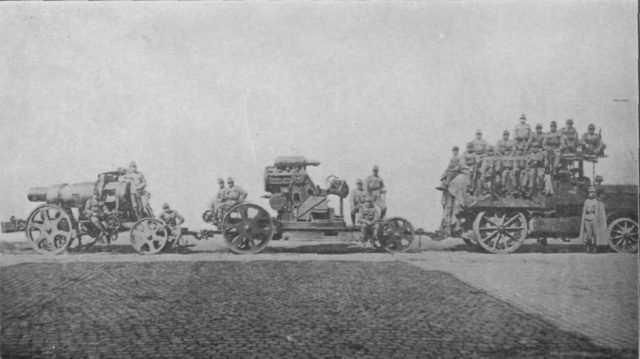
Big Bertha
The Germans had developed their own super weapon. Like so many innovations in German military technology, it was the creation of the Krupp family firm, possibly the most influential military manufacturers of the 19th and 20th centuries.
The gun being created by Krupp was a 420 mm howitzer, named Big Bertha after the wife of the head of the family. Being even larger than the Skoda pieces, the first Big Bertha could only be moved by rail. With war breaking out, the Krupp works rushed to make a version that could be moved around by road, freeing it from the rail network.
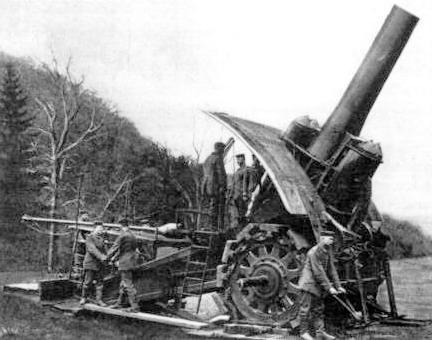
Nine days after the Germans first faced the Belgian forts at Liege, the first Big Bertha arrived. Together with the Austrian mortars, these guns smashed the Belgian defenses, surrendering the supposedly impregnable forts to the Germans in a matter of days.
Long Max
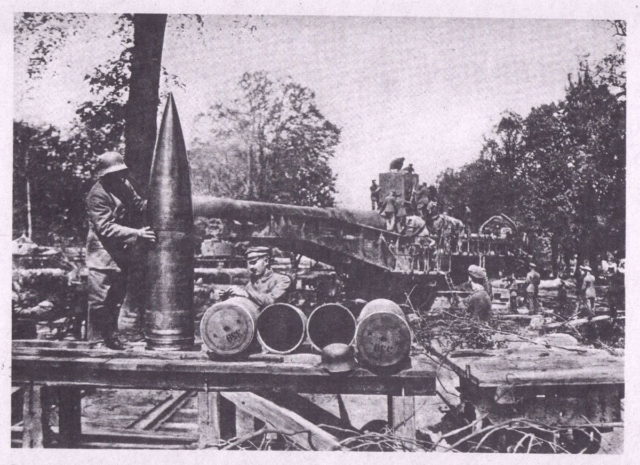
The most impressive super gun of World War One was Long Max, officially titled Wilhelm Geschutz – William’s Gun. It was the most complicated weapon ever created.
Starting with a 381 mm naval gun nearly 56 feet long, German engineers reamed out the barrel and inserted a 210 mm tube, extending the rifled barrel to almost 93 feet long. An unrifled tube on the end made the whole thing 112 feet long, and it weighed 138 tons.
Long Max fired using a specially created slow-burning powder. It was so powerful that the rifling wore out and had to be re-bored every 65 rounds, with each of those rounds altered to make up for loss of power and accuracy.
Firing 74 miles, Long Max hit Paris, far from the front lines. Intended to break French morale, this move was, in reality, more about testing the capability of the gun. From March to August 1918 it bombarded the city to no military effect.
Dora aka Gustav
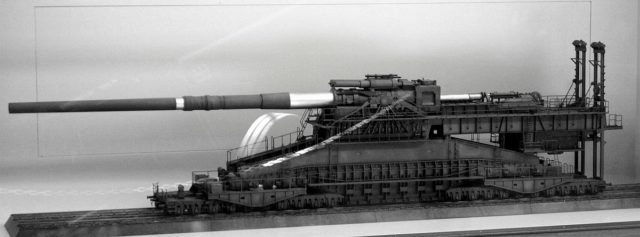
In World War Two, the Krupp engineers once again set out to build the most impressive guns they could. This time, they created the largest and most powerful gun in history, a one-of-a-kind called Dora.
90 feet long, with an 800 mm bore, Dora could fire a 7.1-ton shell up to 23 miles, using 1.75 tons of powder per shot. Designed to pierce the French Maginot Line, she was not completed until after France had fallen and was sent to the Eastern Front instead. There she bombarded the forts of Sevastopol, on one occasion destroying a powder magazine 100 feet underground.
At one point, Dora returned to Germany and was renamed Gustav, in the hope of fooling the Allies into believing there were two of these guns. It was eventually captured by the Soviets in Poland.
Karl Class Mortars
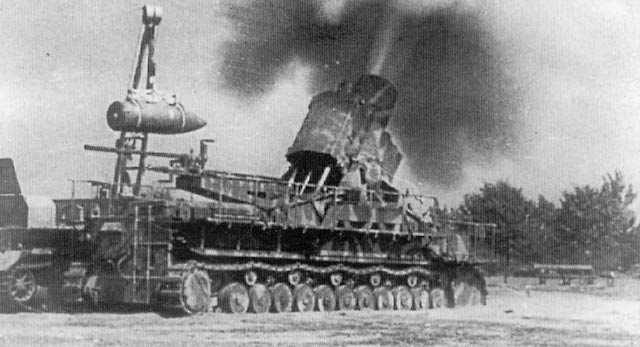
Also at Sevastopol were two of Germany’s six Karl class guns. These 600 mm mortars were the largest self-propelled artillery ever made, capable of traveling at three miles per hour over level ground. This was useful in maneuvering them in a small area but could not be sustained over long distances, for which it traveled in custom railroad cars.
The crews of these guns were a measure of how complex operating a super gun could be. Each Karl class mortar needed a crew of 109 men.
Kanone 12
Looking like a modified version of Long Max, Kanone 12 took on a similar role – attacking civilian targets over great distances to strike fear into the enemy.
Another Krupp weapon, Kanone 12 fired 210 mm ammunition, just like its predecessor. Placed in northern France, it flung projectiles across the English Channel, hitting targets in the county of Kent.
Little David
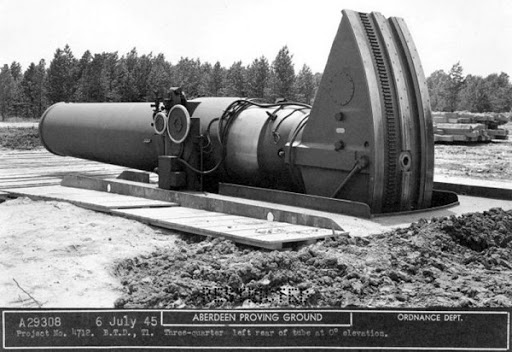
Though most superguns were created by the Germans, the Allies in World War Two had one of their own – the American made Little David.
At 914 mm, Little David had the largest bore of the war. It was originally built to test bombs designed to be dropped from planes. By firing them up into the air in a controlled arc, it could hit a small test target more accurately than any bomber.
On realizing the potential of their weapon, the Americans retooled it to use against Germany’s defenses of the Westwall. 22 feet long and sitting on an 18-foot base, Little David had to be installed in a pit before firing. Its 3,650-pound shells were loaded by machinery and took nearly half a minute to slide into the barrel. It would undoubtedly have shattered the Westwall, but like so many massive artillery pieces, it arrived too late for the job it was built to do. The Allies advanced into Germany without it, and it was never fired against an enemy target.
Source:
William Weir (2006), 50 Weapons that Changed Warfare.
